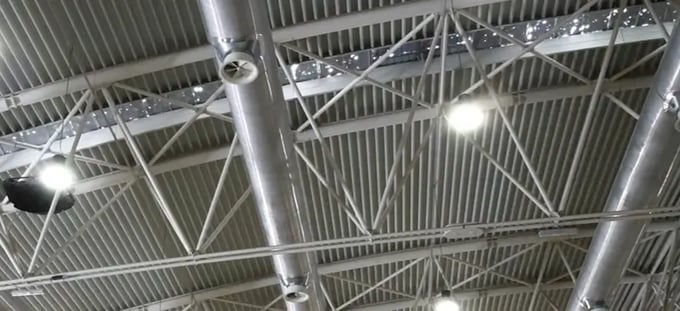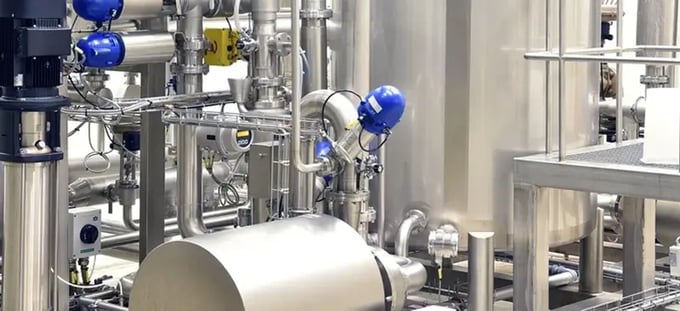A small sensor can save big buildings a lot of money. This makes the hard work of facilities management professionals much easier.
When it comes to managing water infrastructure, there are few substitutes for a facilities manager going out in person. They must check a building from top to bottom, looking for any leaks or water damage signs.
LoRaWAN water leak detector technology and the Internet of Things (IoT) have the potential to benefit facilities management and building owners. They could save time and money.
What is LoRaWAN?
LoRaWAN is a Low-Power, Wide-Area (LPWA) software architecture and communication protocol connecting sensors and other "things" to digital networks. This technology has two key advantages:
Firstly, it uses minimal energy.
Secondly, it allows for secure, wireless transmission of data over long distances. And because it is an international specification, it is interoperable with all kinds of networks and software.
It is still relatively new, first created in 2015 and now maintained by the non-profit LoRa® Alliance.

How LoRaWAN water leak detection helps facilities management pros
The most common way water leaks in large facilities or commercial buildings are found is when the damage becomes visible, or there is an unexplained increase in the water meter.
This makes managing a building's water systems crisis-driven and inefficient. Especially as the most costly leaks are usually small but with long runtime. Leaks like this will go unnoticed until significant long-term damage is done or there is a sudden flood.
It also means there is usually a high, immediate cost when a leak is found: if, for example, water damage is spotted in the ceiling below an upper-floor bathroom, it is likely a fitting and the waterproofing membrane both failed, and there is already significant structural damage. Numerous people are required to perform loud, messy work across multiple floors. This is incredibly disruptive to those who live or work in the building.
However, with the addition of LoRaWAN® liquid detection sensors, almost all of these costs can be reduced or eliminated:
-
Sensors can be installed in multiple areas of a facility where a leak could occur. Examples include fittings, valves, fixtures, and meters. These sensors should be placed on exposed pipes, walls, and ceilings.
-
Sensors can be set up to spot small leaks. When they detect a certain amount of water, they wirelessly send an alert to a utility's digital network. This alert is accurate to the exact spot.
-
Data from the sensors can be captured in real-time, minimizing the time management needed to check the facility manually.
Use case example: Office building
As an example of how this technology can be used in practice, we will use a small office building. An ideal configuration of sensors would be:
- Around the pipes for both supply and waste for:
- Bathrooms.
- Kitchens and cooking spaces.
- Cleaning facilities.
- At strategic points throughout the building's water infrastructure, for both supply and waste, where there are most likely to be leaks over time (fittings, valves, potential points of stress in the distribution network).
- Connection points with public infrastructure or outside the building (where there might be additional chances of blockages or pipes freezing).
Sensors can be used to monitor rainwater collected from a green roof. They can also be configured to detect when a collector is reaching saturation.
LoRaWAN-type sensors can be connected to a network inside or outside the building. This enables facilities management to be alerted immediately when a leak occurs. They can also be informed precisely where the leak has taken place. Ultimately, using sensors in this way:
- Protects the building over its lifespan
- Reduces repair costs
- Reduces time spent by facilities management having to check the building's status in person.
Additionally, it could also aid buildings in meeting sustainability objectives and corresponding certification from relevant programs (for example, Building Research Establishment Environmental Assessment Method in the UK, German Sustainable Building Council in Germany, Leadership in Energy and Environmental Design in the US) by reducing buildings' overall water usage.

The right kind of sensor could make facilities management work much easier
Facilities management is complex and challenging. Constant monitoring and significant heavy labor are required. Additionally, technicians and contractors must be managed and owners or administration must be kept informed.
Finding a water leakage is often manual work. To determine the status of the network and the best course of action, you must go out into the field.
It is also obviously difficult to know what's wrong with a water pipe when you can't see inside it. However, this reality is changing now.
Sensors like LAIIER's Water Leak Detection Sensor can be applied like tape. They can fit around any kind of pipe joints, valves, and fittings. Larger sensors in hardware housing cannot be used in these cases.
They can immediately detect leaks of any size, alerting you no matter how far away you might be. This gives technicians and facilities management a natural extension to their current methods for maintaining infrastructure using IoT technology.